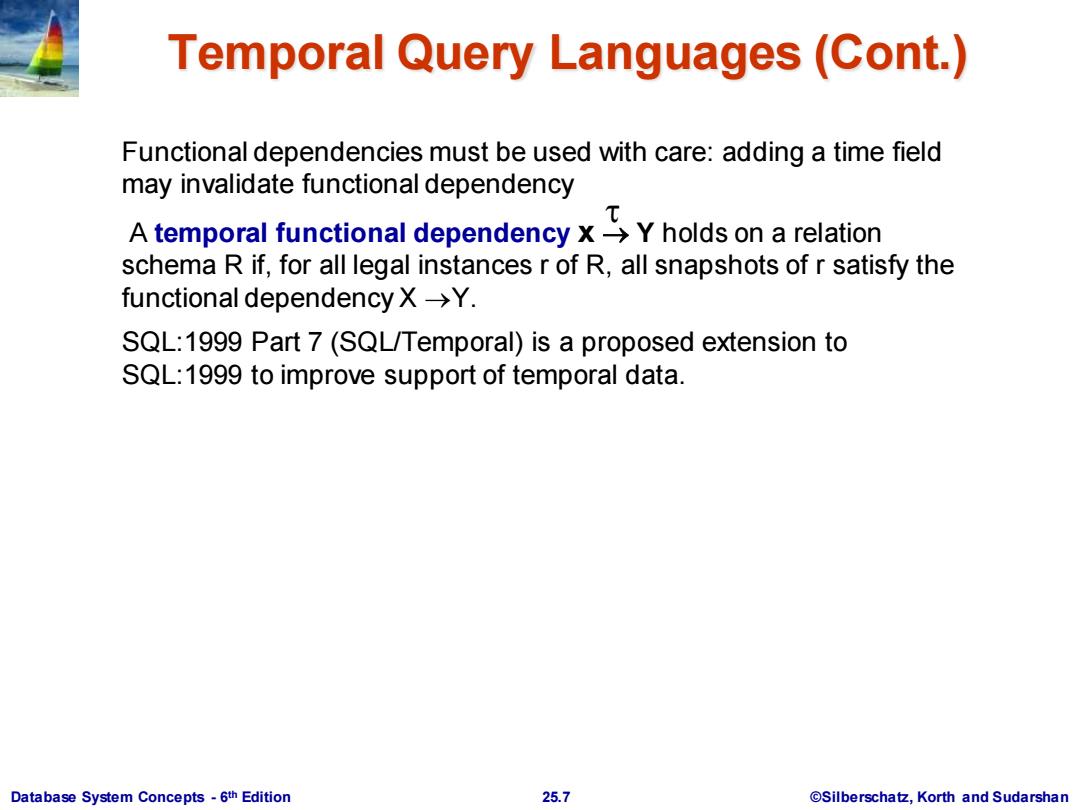
Temporal Query Languages(Cont.) Functional dependencies must be used with care:adding a time field may invalidate functional dependency A temporal functional dependency x>Y holds on a relation schema R if,for all legal instances r of R,all snapshots of r satisfy the functional dependency X->Y. SQL:1999 Part 7(SQL/Temporal)is a proposed extension to SQL:1999 to improve support of temporal data. Database System Concepts-6th Edition 25.7 @Silberschatz,Korth and Sudarshan
Database System Concepts - 6 25.7 ©Silberschatz, Korth and Sudarshan th Edition Temporal Query Languages (Cont.) Functional dependencies must be used with care: adding a time field may invalidate functional dependency A temporal functional dependency x → Y holds on a relation schema R if, for all legal instances r of R, all snapshots of r satisfy the functional dependency X →Y. SQL:1999 Part 7 (SQL/Temporal) is a proposed extension to SQL:1999 to improve support of temporal data.
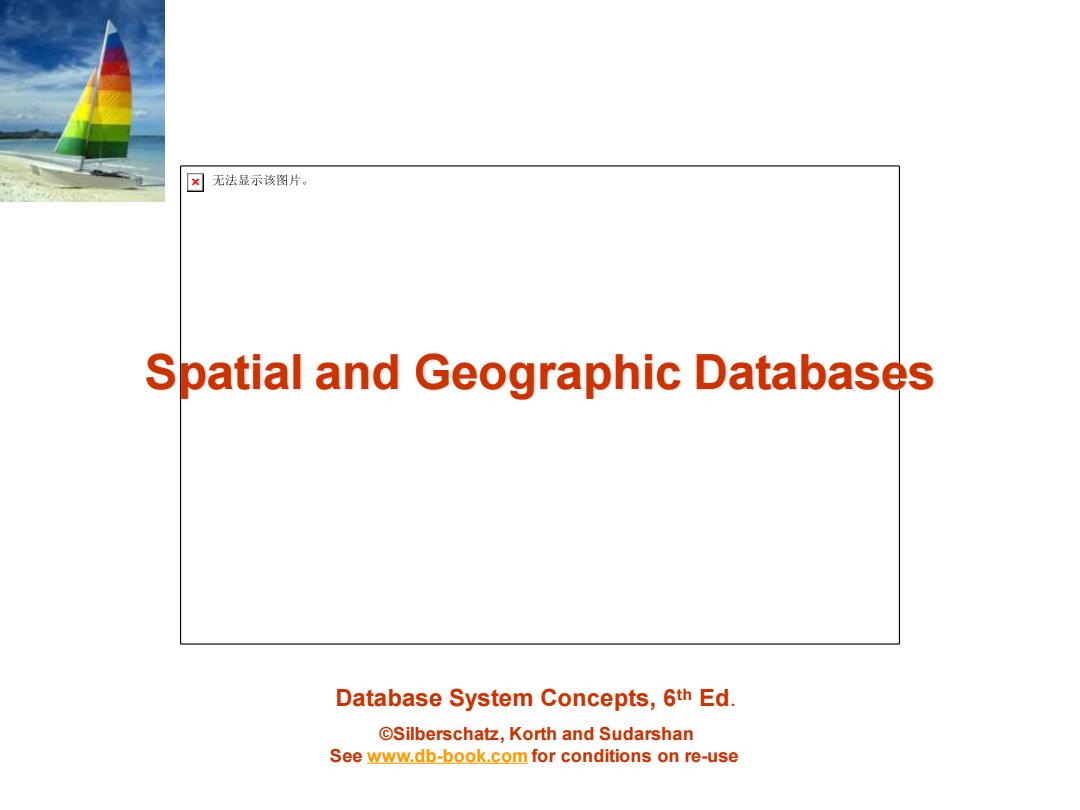
☒无法显示该图片。 Spatial and Geographic Databases Database System Concepts,6th Ed. @Silberschatz,Korth and Sudarshan See www.db-book.com for conditions on re-use
Database System Concepts, 6th Ed. ©Silberschatz, Korth and Sudarshan See www.db-book.com for conditions on re-use Spatial and Geographic Databases
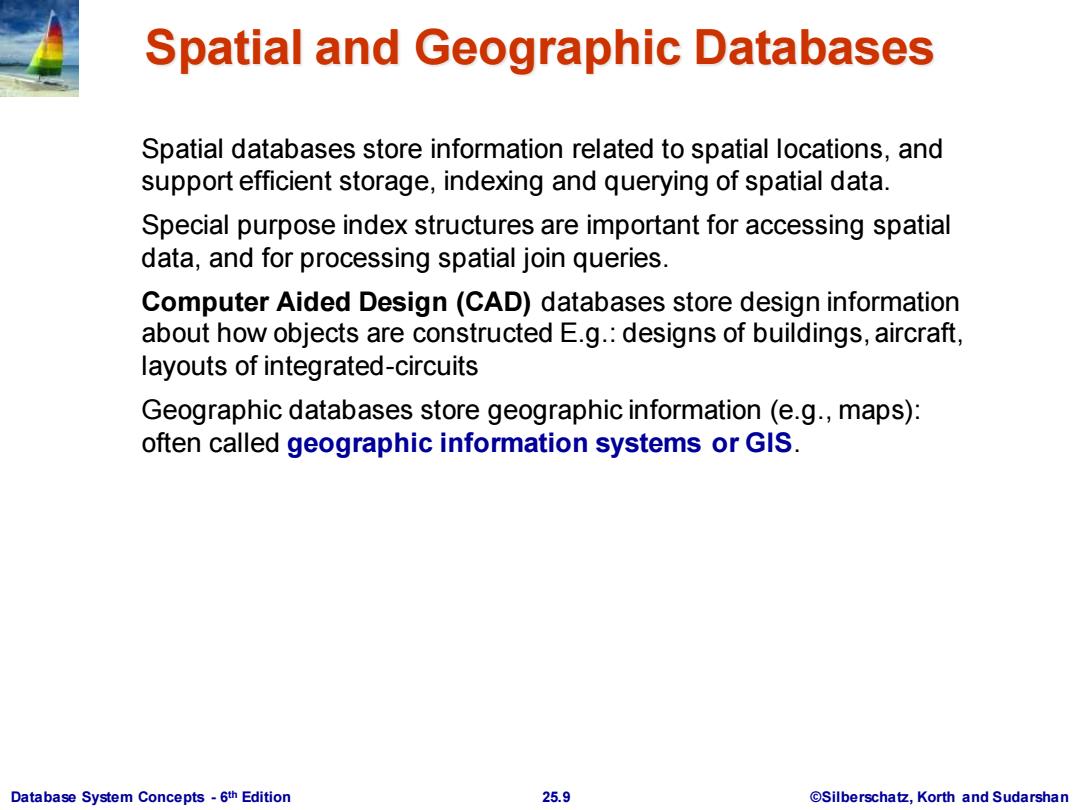
Spatial and Geographic Databases Spatial databases store information related to spatial locations,and support efficient storage,indexing and querying of spatial data. Special purpose index structures are important for accessing spatial data,and for processing spatial join queries. Computer Aided Design(CAD)databases store design information about how objects are constructed E.g.:designs of buildings,aircraft, layouts of integrated-circuits Geographic databases store geographic information(e.g.,maps): often called geographic information systems or GIS. Database System Concepts-6th Edition 25.9 @Silberschatz,Korth and Sudarshan
Database System Concepts - 6 25.9 ©Silberschatz, Korth and Sudarshan th Edition Spatial and Geographic Databases Spatial databases store information related to spatial locations, and support efficient storage, indexing and querying of spatial data. Special purpose index structures are important for accessing spatial data, and for processing spatial join queries. Computer Aided Design (CAD) databases store design information about how objects are constructed E.g.: designs of buildings, aircraft, layouts of integrated-circuits Geographic databases store geographic information (e.g., maps): often called geographic information systems or GIS
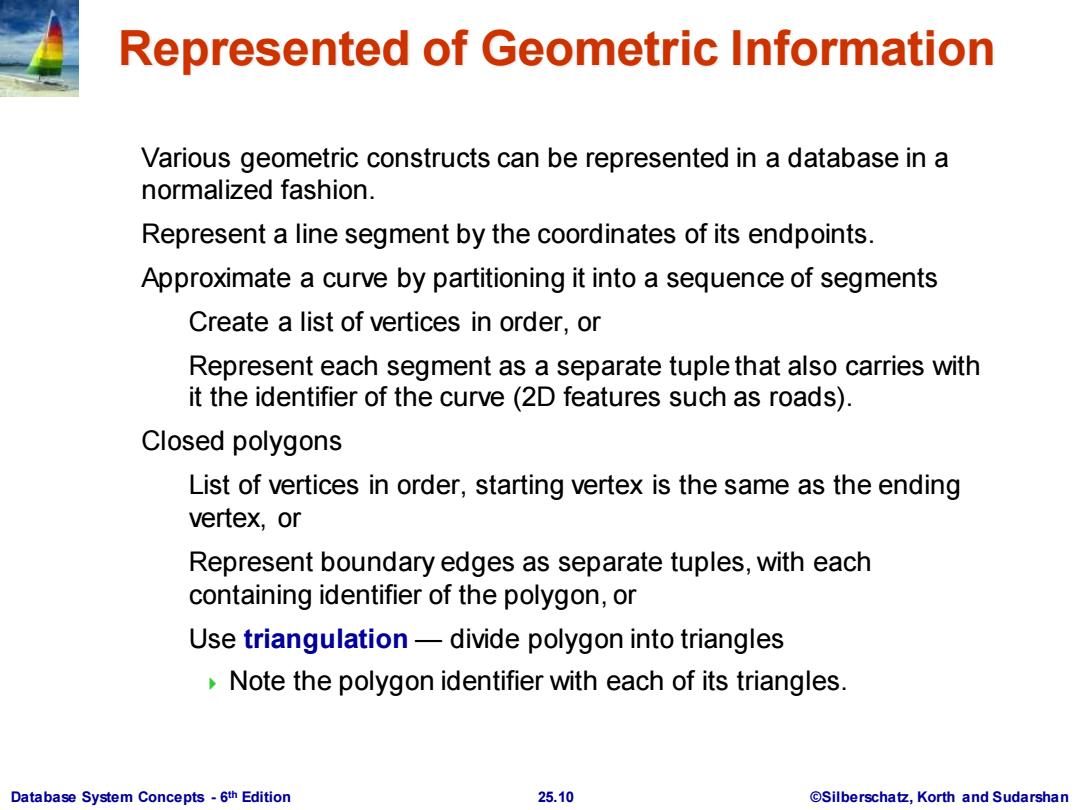
Represented of Geometric Information Various geometric constructs can be represented in a database in a normalized fashion. Represent a line segment by the coordinates of its endpoints. Approximate a curve by partitioning it into a sequence of segments Create a list of vertices in order,or Represent each segment as a separate tuple that also carries with it the identifier of the curve(2D features such as roads). Closed polygons List of vertices in order,starting vertex is the same as the ending vertex.or Represent boundary edges as separate tuples,with each containing identifier of the polygon,or Use triangulation-divide polygon into triangles Note the polygon identifier with each of its triangles. Database System Concepts-6th Edition 25.10 @Silberschatz,Korth and Sudarshan
Database System Concepts - 6 25.10 ©Silberschatz, Korth and Sudarshan th Edition Represented of Geometric Information Various geometric constructs can be represented in a database in a normalized fashion. Represent a line segment by the coordinates of its endpoints. Approximate a curve by partitioning it into a sequence of segments Create a list of vertices in order, or Represent each segment as a separate tuple that also carries with it the identifier of the curve (2D features such as roads). Closed polygons List of vertices in order, starting vertex is the same as the ending vertex, or Represent boundary edges as separate tuples, with each containing identifier of the polygon, or Use triangulation — divide polygon into triangles Note the polygon identifier with each of its triangles
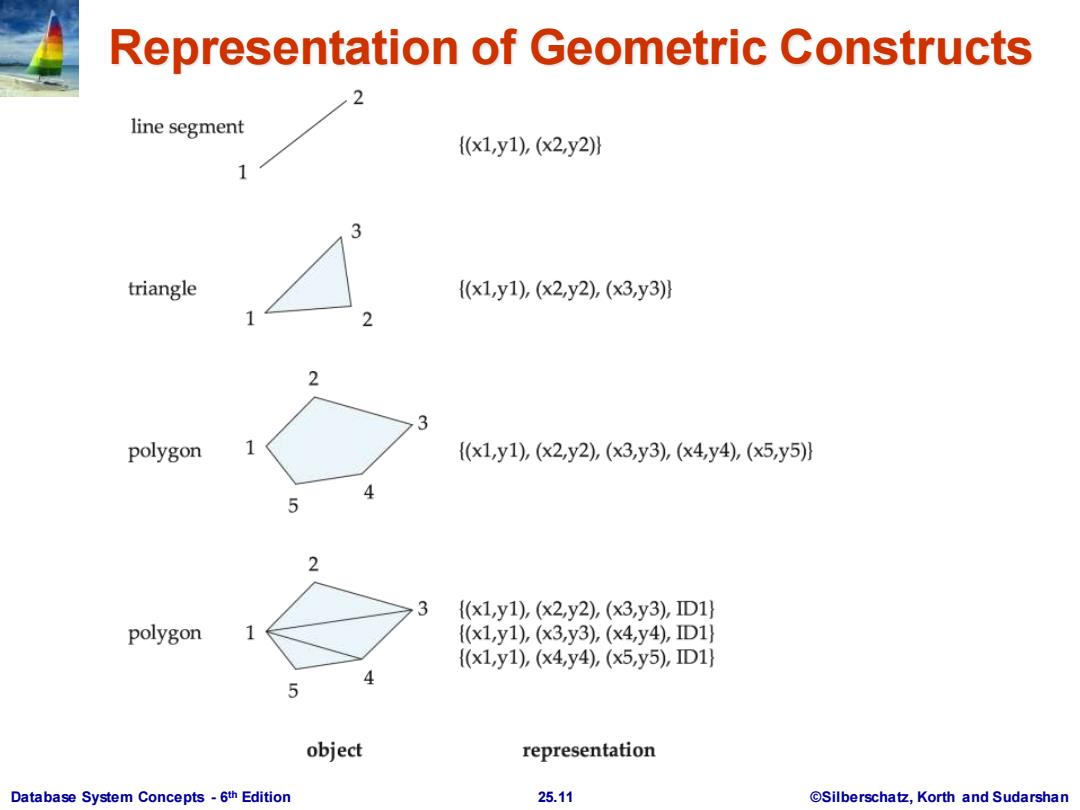
Representation of Geometric Constructs line segment (x1y1),(x2y2)} 1 3 triangle {x1y1),(x2y2),(x3y3)} 3 polygon {(x1y1),(x2,y2),(x3,y3),(x4,y4),(x5y5)} 4 5 2 3 {(x1,y1),(x2,y2),(x3,y3),D1 polygon (x1,y1),(x3,y3),(x4,y4),D1 {(x1,y1),(x4,y4),(x5,y5),D1 4 5 object representation Database System Concepts-6th Edition 25.11 @Silberschatz,Korth and Sudarshan
Database System Concepts - 6 25.11 ©Silberschatz, Korth and Sudarshan th Edition Representation of Geometric Constructs